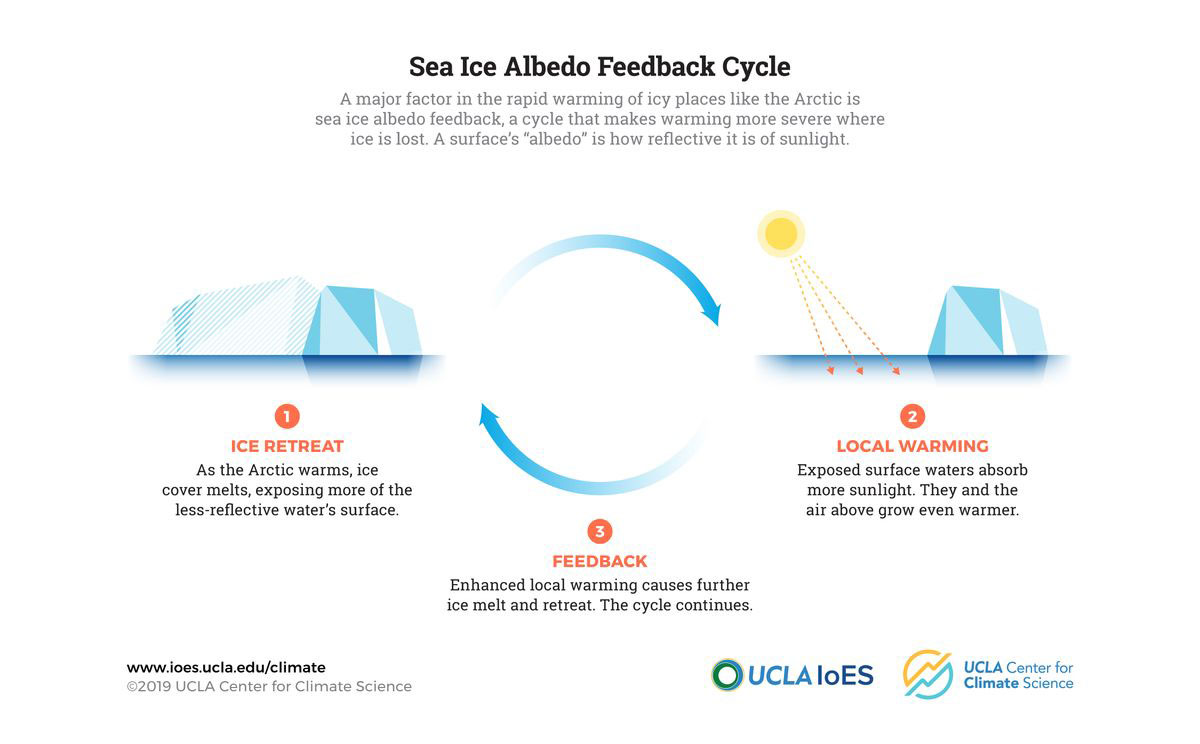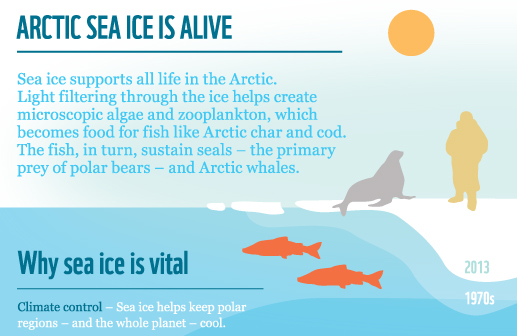
That's 1.54 million square kilometers (595,000 square miles) smaller than the 1981-2010 average-an area larger than Alaska. In September 2022, the area that was at least 15 percent ice covered was 4.87 million square kilometers (1.88 million square miles), tying with 2010 for eleventh lowest in the satellite record. The Arctic ice pack reaches its maximum extent in March, and its minimum extent in September. Around this core of year-round ice was a fringe of seasonal ice that froze each winter and melted each summer. Historically, most of the surface of the Arctic Ocean remained ice-covered year round. The Arctic Ocean occupies about 6 million square miles around Earth's North Pole. NOAA graph, based on extent data from the National Snow and Ice Data Center. The amount of sea ice ice that survives the summer melt is declining rapidly. The total extent is the area of all pixels in the satellite image where the ice concentration is at least 15 percent. Sea ice extent in the Arctic at the end of the summer melt season each September from 1979–2022, based on satellite observations. 2022 end-of summer recap from the National Snow and Ice Data Center.

In March 2020, it accounted for less than 5%. Old, thick ice made up a third of the Arctic Ocean ice pack at the winter maximum in March 1985.

The September 2022 ice extent was 4.87 million square kilometers (1.88 million square miles), tied with 2010 for eleventh lowest in the satellite record.Since satellite-based measurements began in the late 1970s, Arctic sea ice extent has decreased in all months and virtually all regions.


 0 kommentar(er)
0 kommentar(er)
